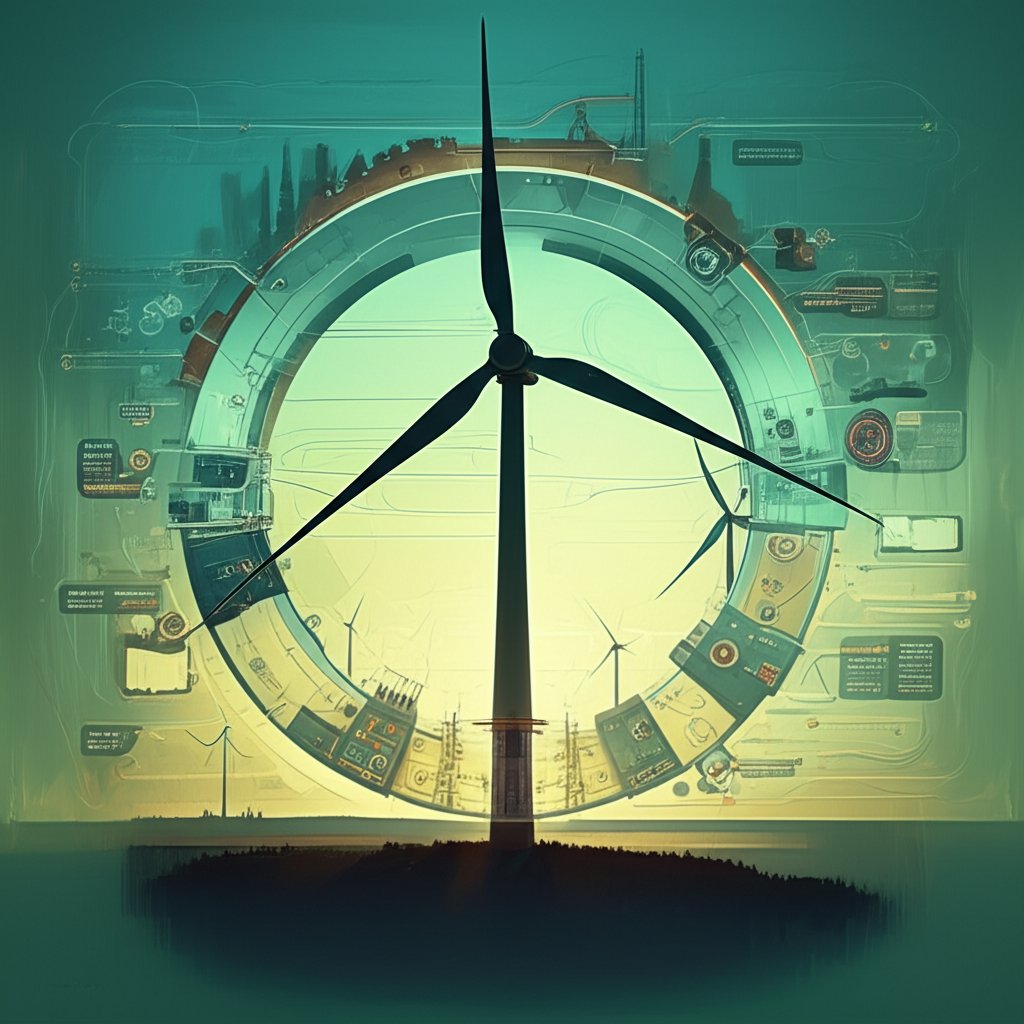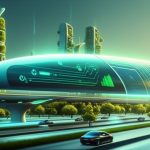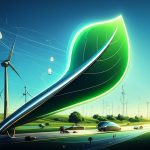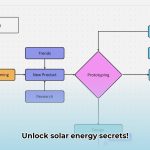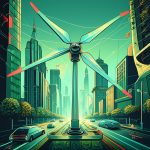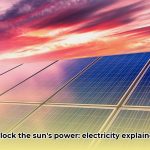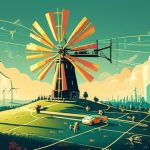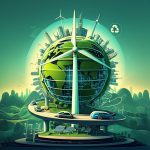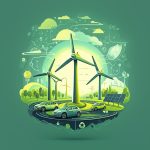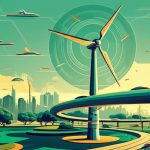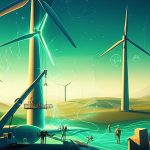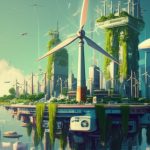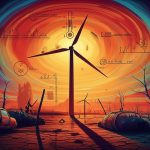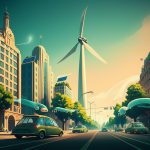Ever wondered what goes into those giant windmills generating clean energy? The wind turbine diagram, a detailed visual representation of the machine’s components and their functions, is key to understanding how these complex systems convert wind into electricity. Understanding the components of a wind turbine and how they function can help you better grasp the factors influencing the overall cost and performance of wind energy projects.
At a glance:
- Uncover the function of each major component in a wind turbine, from blade to foundation.
- Learn how each part contributes to the turbine’s overall efficiency and power generation.
- Understand how component selection and quality impact the overall cost of a wind energy project.
- Gain insights into maintenance requirements based on component-specific needs.
- Distinguish between different types of turbines based on their key components.
Decoding the Wind Turbine Diagram: A Top-Down View
A wind turbine diagram serves as a roadmap to understanding the intricate workings of these massive structures. It’s not just a picture; it highlights the connection between form and function. Let’s break down the key elements, starting from the top and working our way down.
1. Rotor Blades: The most visible part of a wind turbine, the blades capture the wind’s energy and convert it into rotational motion.
- Function: Aerodynamic design is crucial. Blades are carefully shaped to maximize lift and minimize drag, optimizing energy capture at various wind speeds.
- Cost Factor: Larger blades capture more wind, increasing power output, but also increase upfront costs and transportation challenges.
- Example: A longer blade may increase the turbine’s annual energy production (AEP) but requires stronger (and more expensive) support structures.
2. Rotor Hub: The central point where the blades connect. - Function: Secures the blades and transmits the rotational force to the nacelle. Often includes pitch control mechanisms.
- Pitch Control: This system adjusts the angle of the blades to optimize energy capture or feather (turn edge-on to the wind) to protect the turbine in high winds.
- Example: If wind speeds exceed safe limits, the pitch control system automatically adjusts the blades to prevent damage, albeit at the cost of some energy generation.
3. Nacelle: The housing that sits atop the tower, containing the core components of the turbine. The nacelle alone can account for up to 30% of total turbine costs.. - Function: Protects sensitive machinery from the elements, including the gearbox, generator, and control systems.
- Key Components:
- Gearbox (in some designs): Increases the rotational speed from the blades to the generator. Direct-drive turbines do not have gearboxes.
- Generator: Converts mechanical energy into electrical energy.
- Control System: Monitors and controls turbine operation, including starting, stopping, and safety features.
- Yaw System: Rotates the nacelle to keep the rotor facing into the wind, maximizing energy capture.
- Cost Factor: The nacelle’s complexity and the high cost of replacing components like the gearbox significantly impact the overall cost of wind energy. Note that the single most expensive wind turbine component is the nacelle. Large multi-ton cast-iron nacelles can cost over $1 million each.
4. Tower: The tall structure that supports the nacelle and rotor. - Function: Elevates the turbine to access stronger, less turbulent winds at higher altitudes.
- Types: Typically made of steel, concrete, or hybrid designs.
- Cost Factor: Taller towers increase energy capture but also add to the cost of materials and construction.
- Example: In areas with significant wind shear (wind speed increasing with height), a taller tower can dramatically improve energy production.
5. Foundation: The base that anchors the entire turbine to the ground or seabed (for offshore turbines). - Function: Provides stability and support against wind loads and other environmental forces.
- Types: Concrete foundations are common for onshore turbines. Offshore turbines utilize specialized foundations like monopiles, jackets, or floating platforms.
- Cost Factor: Foundation costs vary greatly depending on soil conditions, location, and turbine size. Offshore foundations are significantly more expensive.
6. Electrical Components: The system that collects the electricity generated and prepares it for distribution. - Function: Conducts electricity produced for distribution. Wind farms sited far from existing transmission infrastructure, significant expenditures are required to construct new overhead transmission lines, access roads, transformer substations, utility interconnections, and other electrical system upgrades to get power to load centers.
- Key Components: transformer substations, cabling, and grid connections.
- Cost Factor: Interconnection costs can exceed $100 million for remote wind farms
How Components Influence Wind Turbine Cost
Understanding the wind turbine diagram helps illustrate that all components contribute to overall project expenses. To determine the factors influencing the overall cost, it’s important to conduct wind resource assessment and site analysis; construction; permitting and interconnection studies; utility system upgradation, transformers, protection and metering of the equipment; insurance; operations, warranty, maintenance, and repair; and legal and consultation fees.
Here’s how different parts interplay on expense drivers:
- Size and Capacity: Larger turbines with greater capacity (measured in megawatts) have higher upfront costs but can generate more electricity. Commercial wind turbines typically cost between $2.6 million and $4 million each , with an average cost of about $1.3 million per megawatt.
- Technology: Direct-drive turbines, while potentially more reliable, may have higher initial costs compared to geared turbines.
- Materials: The choice of materials for blades, towers, and foundations impacts both cost and performance. Advanced composite materials can improve blade efficiency but also increase manufacturing expenses.
- Location: Offshore turbines are significantly more expensive than onshore turbines due to specialized designs and installation requirements. The average cost for a commercial wind turbine ranges from $2.5 million to $4 million , with prices typically around $1 to $1.25 million per megawatt.
- Installation and Grid Connection: Connecting a wind turbine to the electrical grid involves costs for cabling, transformers, and grid upgrades, which can vary depending on location and grid infrastructure.
Maintenance and the Wind Turbine Diagram
A wind turbine diagram isn’t just useful for understanding how turbines work; it’s also critical for planning maintenance. Knowing the location and function of each component allows for targeted inspections and repairs.
- Blade Inspection: Regular inspections for cracks, erosion, and lightning damage are essential to maintain aerodynamic efficiency and prevent catastrophic failures.
- Gearbox Maintenance: Gearboxes require regular lubrication and oil changes to prevent wear and tear. Condition monitoring systems can detect early signs of problems.
- Generator Maintenance: Checking for overheating, vibration, and insulation degradation is crucial for generator reliability.
- Yaw and Pitch System Maintenance: Ensuring these systems are functioning correctly is vital for optimizing energy capture and protecting the turbine during high winds. Routine wind turbine maintenance costs range from $42,000-$48,000 per MW per year.
Choosing the Right Turbine: A Component-Based Decision
Selecting the appropriate wind turbine depends on various factors, including wind resources, site conditions, and budget. By understanding the individual component costs and benefits, you can make informed decisions.
- Small Wind Turbines (Residential/Small Business): These turbines typically have a capacity of less than 100 kW and are designed for distributed generation. They often use simpler designs and lower-cost components.
- Commercial Wind Turbines (Utility-Scale): These turbines range from 1 MW to 5 MW or more and are designed for large-scale power generation. They incorporate advanced technologies, robust components, and sophisticated control systems.
- Offshore Wind Turbines: These turbines are specifically designed for harsh marine environments and feature corrosion-resistant materials, specialized foundations, and advanced monitoring systems. Larger offshore turbines can cost tens of millions of dollars, with the most powerful 12 MW turbines reaching up to $400 million for manufacturing and installation.
Wind Turbine Diagram: Frequently Asked Questions
Q: What is the most expensive part of a wind turbine to replace?
A: The nacelle, housing the gearbox, generator, and control systems, is typically the most expensive component to replace.
Q: How often do wind turbine blades need to be replaced?
A: With proper maintenance, wind turbine blades can last for 20 years or more. However, damage from lightning strikes, erosion, or extreme weather events can shorten their lifespan.
Q: Are direct-drive turbines more expensive than geared turbines?
A: Direct-drive turbines often have a higher upfront cost due to the larger generator required, but they may have lower maintenance costs over their lifespan due to the absence of a gearbox.
Q: How does tower height affect energy production?
A: Taller towers allow turbines to access stronger, less turbulent winds at higher altitudes, increasing energy production.
Your Wind Turbine Diagram Playbook: Key Takeaways
Ready to apply what you’ve learned? Here’s a quick guide:
- Assess Your Needs: Determine energy requirements.
- Evaluate Wind Resources: Analyze wind speed and direction at your site.
- Consider Component Costs: Research costs of different turbine components and technologies.
- Factor in Maintenance: Plan for ongoing maintenance costs and component replacement.
- Consult Experts: Seek advice from wind energy professionals.
- Review Financial Incentives: The federal Production Tax Credit (PTC) provides an inflation-adjusted tax credit of around $0.015 – $0.024 per kilowatt-hour generated by new utility-scale wind projects. The Investment Tax Credit (ITC) allows new wind project developers to receive a 26% tax credit claimed against the total capital expenditures for turbines and construction.
Understanding the parts of a wind turbine is crucial, but it’s only the tip of the iceberg. For a broader perspective on wind energy economics, explore Understanding turbine cost drivers to gain a deeper appreciation of how component costs fit into the overall project picture.
Beyond the Blueprint: Making Informed Decisions
By dissecting the wind turbine diagram and understanding the function and expense tied to each component, you’re better prepared to evaluate wind energy projects, assess costs, and contribute to informed discussions about renewable energy investments. It’s about turning a complex diagram into a clear understanding of the building blocks of clean power.
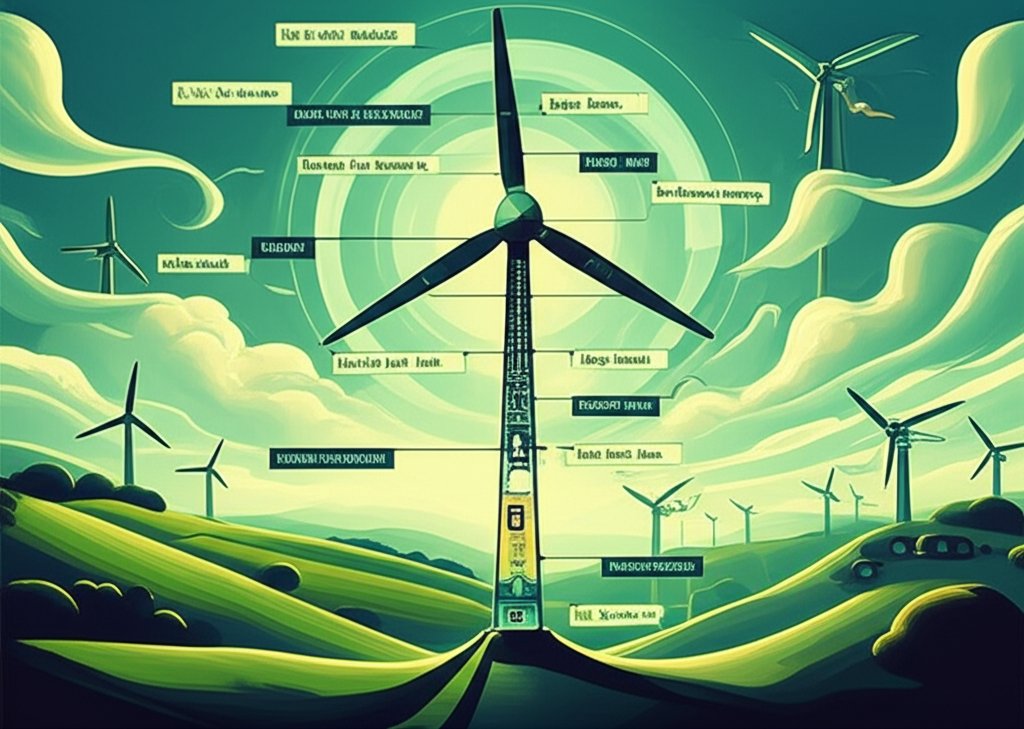
- How Did Charles F. Brush Discover Wind Energy Tech? - November 19, 2025
- Wind Energy Vertical: Weighing the Pros and Cons of Wind Power - November 16, 2025
- How Much Energy Does a Wind Turbine Actually Create? - November 14, 2025
